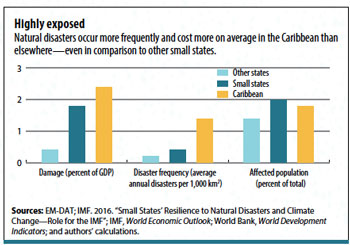
Weathering Calamity: Economic Impact of Natural Disasters
Weathering Calamity: Economic Impact of Natural Disasters
Natural disasters have the power to reshape landscapes and communities, leaving a profound and lasting impact on economies worldwide. In this exploration, we delve into the intricate web of consequences that unfold when nature’s fury collides with economic systems.
The Immediate Toll on Infrastructure
Natural disasters, be they hurricanes, earthquakes, or floods, wreak havoc on infrastructure. Roads, bridges, and utilities are often damaged or destroyed, disrupting transportation and communication networks. The immediate economic toll involves the costs of emergency response, rescue operations, and the subsequent need for reconstruction. These impacts strain local and national economies, diverting resources from other essential areas.
Disruption to Businesses and Supply Chains
The economic repercussions of natural disasters extend to businesses and supply chains. Disruptions in manufacturing, distribution, and transportation impede the flow of goods and services. Businesses may face closures, production halts, and supply shortages, leading to financial losses. The interconnectedness of the global economy means that disruptions in one region can have ripple effects throughout the supply chain.
Job Losses and Unemployment
The aftermath of natural disasters often brings about job losses and increased unemployment. Businesses forced to shut down or scale back operations may lay off workers, contributing to a sudden spike in unemployment rates. This not only impacts individuals and families but also poses challenges for the broader economy as consumer spending decreases, further dampening economic activity.
Insurance Costs and Financial Strain
The economic impact of natural disasters extends to the insurance industry, which faces substantial claims for property damage and loss. The surge in claims can lead to increased insurance costs for individuals and businesses, putting financial strain on both. In some cases, the rising costs may lead to insurance unavailability, leaving communities vulnerable to future disasters.
Government Spending and Fiscal Challenges
Governments bear a significant economic burden in the aftermath of natural disasters. Emergency response efforts, infrastructure rebuilding, and assistance to affected communities require substantial financial resources. The strain on public finances can lead to budgetary deficits, increased debt, or the reallocation of funds from other essential services, creating long-term fiscal challenges.
Impact on Agriculture and Food Security
Natural disasters can devastate agricultural sectors, affecting food production and supply. Crop and livestock losses contribute to food shortages, leading to increased prices and food insecurity. The agricultural fallout also impacts the livelihoods of farmers, creating a ripple effect on rural economies and exacerbating economic challenges in already vulnerable regions.
Tourism and Economic Downturn
Regions heavily dependent on tourism often experience a sharp economic downturn following natural disasters. Damage to attractions, infrastructure, and the overall perception of safety can deter tourists, leading to a decline in revenue for businesses reliant on the tourism industry. The economic repercussions extend beyond tourism-related sectors to impact the broader local economy.
Rebuilding and Stimulating Economic Recovery
While natural disasters bring immense challenges, they also present opportunities for economic revitalization. The rebuilding phase necessitates investments in construction, infrastructure, and technology. Governments, businesses, and communities can work together to stimulate economic recovery, create jobs, and build more resilient systems that can withstand future calamities.
Investing in Resilience and Preparedness
As the frequency and intensity of natural disasters increase, there is a growing recognition of the need for resilience and preparedness. Investing in early warning systems, infrastructure resilience, and community preparedness initiatives can mitigate the economic impact of future disasters. Proactive measures not only save lives but also contribute to the long-term sustainability of economies in disaster-prone regions.
Looking Forward: A Call for Global Collaboration
To explore innovative solutions at the intersection of the Economic Impact of Natural Disasters, visit vexhibits.com. The economic impact of natural disasters underscores the interconnectedness of global challenges. As communities and nations navigate the aftermath, global collaboration becomes paramount. By sharing knowledge, resources, and innovative strategies, the world can better prepare, respond, and recover from the economic ravages of natural calamities.



